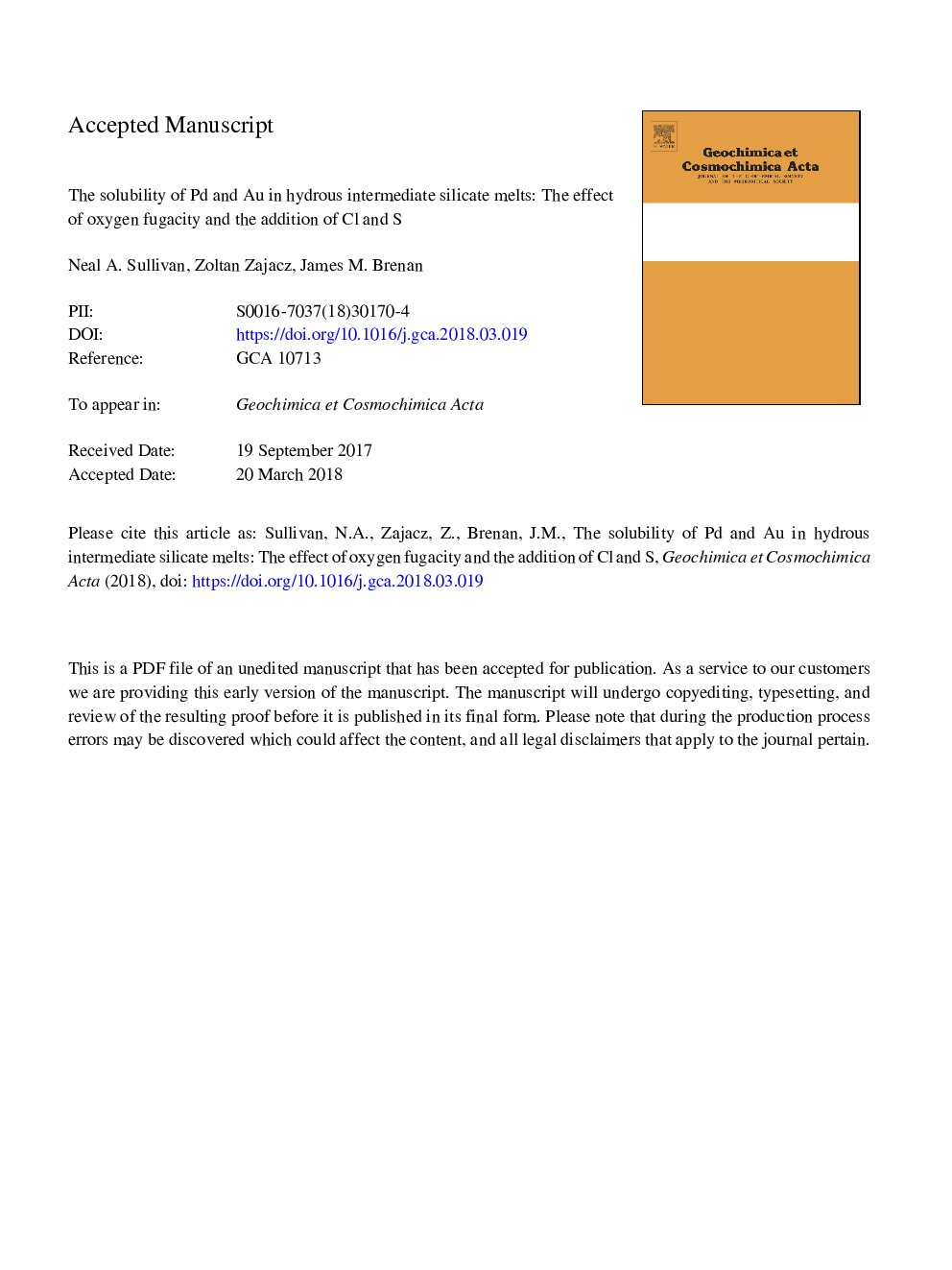| Article ID | Journal | Published Year | Pages | File Type |
|---|---|---|---|---|
| 8910744 | Geochimica et Cosmochimica Acta | 2018 | 43 Pages |
Abstract
The solubilities of Pd and Au in a hydrous trachyandesitic melt were experimentally determined at 1000â¯Â°C and 200â¯MPa at oxygen fugacity (ÆO2) from 0.45 log units below to 6.55 log units above the Ni-NiO buffer (NNO). The effect of adding metal-binding ligands (i.e. Cl and S) to the silicate melt was also studied. The solubility of Au increases from 0.15â¯Â±â¯0.1 to 3.85â¯Â±â¯1.48â¯ppm in Cl- and S-free melts with ÆO2 increasing from NNOâ0.45 to NNO+6.55 with a slope that suggests that it is present in 1+ oxidation state over the entire studied ÆO2 range. On the other hand, Pd solubility, shows a more moderate increase with ÆO2, especially in the lower half of the studied range, increasing from 2.66â¯Â±â¯0.25â¯ppm at NNOâ0.45 to only 3.62â¯Â±â¯0.38â¯ppm at NNO+1.72 in Cl- and S-free melts. Overall, the variation in Pd solubility as a function of ÆO2 indicates Pd being dissolved in the silicate melt in both zero and 1+ oxidation state, with the former being dominant below NNO+4.5. At NNOâ0.45 to +3.48, the addition of 3170-4060â¯ppm Cl to the silicate melt increased the solubility of Au by an average factor of 1.5, in comparison to Cl-free melts. However, at NNO+6.55, Au solubility increased by a factor of 2.5. The addition of Cl had a negligible effect on the solubility of Pd except for a large increase (factor of 2.4) at NNO+6.55. At reducing conditions (NNOâ0.45), the addition of 170â¯ppm S to the silicate melt increased the solubility of Au by a factor of â¼4 but did not change the solubility of Pd in comparison to S-free melts. The observation that Pd is dominantly present as Pd0 at NNOâ¯<â¯+4.5 may explain the lack of complexation with potential reduced sulfur-bearing and chloride ligands. As one may expect similar behavior in fluids degassing from magmas at depth, the lack of oxidized Pd species could be an important factor behind the scarcity of economically viable Pd-rich magmatic-hydrothermal deposits observed in nature.
Keywords
Related Topics
Physical Sciences and Engineering
Earth and Planetary Sciences
Geochemistry and Petrology
Authors
Neal A. Sullivan, Zoltan Zajacz, James M. Brenan,
